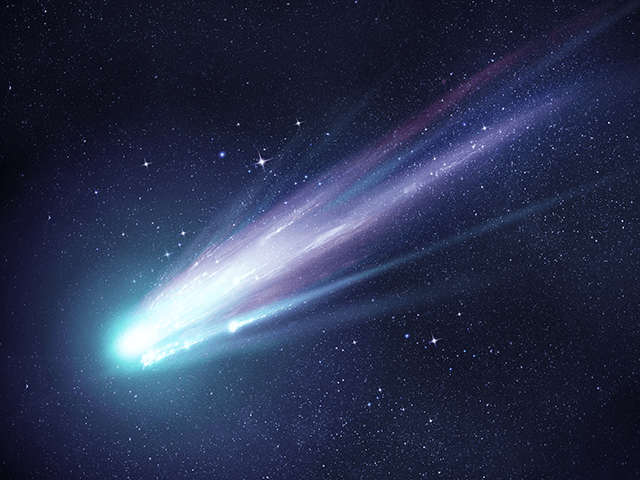A rarely-seen exploding “devil comet” over three times the size of Mount Everest will light up Earth’s skies come April, but scientists are saying not to worry.
The comet, known as 12P/Pons-Brooks in the scientific community, is one of only a few in orbit with an active ice volcano, Richard Miles of the British Astronomical Association said. The “devil” nickname was coined in July, when astronomers spotted “horns” around its nucleus.
“The two ‘horns’ may be caused by a peculiarly-shaped cryovolcanic vent with some sort of blockage causing material to be expelled with a weird flow pattern,” Miles told astronomer Dr. Tony Phillips at Space Weather. Others compared 12P to the “Millennium Falcon” spaceship from Star Wars.
The comet, which had an eruption in July for the first time in 69 years, has been measured at 18.6 miles in diameter, the size of a small city. For reference, Mount Everest is about five and a half miles tall.
A “Devil Comet” estimated to be 3X the size of Mt. Everest is headed for Earth, astronomers report.
Also known as Comet 12P/Pons-Brooks, the comet orbits our Sun every 71.2 years. In July, it underwent an outburst, ejecting a mass of dust and gas and bending into a horned shape,… pic.twitter.com/Co6ji6aOOJ
— Truth In Media (@Truth_InMedia) October 21, 2023
Despite its intense nature, Earth is in no danger of being hit by the massive space-traveler. Instead, experts believe it will fly just close enough to be seen with the naked eye.
“It might be bright enough that you can see with your naked eye or with binoculars, but that’s not because it’s going to be super close,” Teddy Kareta, a postdoctoral researcher at Lowell Observatory, told Insider. “It’s because it’s just generally very bright.”
“We know it’s big. We know it’s an outlier. We know it’s rare,” Kareta said, adding that “a lot of people are really excited about” the comet.
Dr. Phillips noted that the comet will become visible just before the impending solar eclipse in early April.
“12P will reach maximum brightness only a few days before the total solar eclipse on April 8, 2024. Sky watchers in the path of totality could look up and see an outburst for themselves,” wrote Phillips.
Scientists predict that the comet will be roughly 232 million kilometers, or 144,158,116 miles, from Earth at its closest. After its visit, 12P “will then be catapulted back into the solar system, and won’t make its cosmic comeback tour until the year 2095,” the New York Post reports.
12P was first discovered in 1812 by French astronomer Jean-Louis Pons, before being spotted again in 1883. It is categorized as a “periodic” comet with an orbital period of roughly 71 years, SkyLive reported.

COMMENTS
Please let us know if you're having issues with commenting.